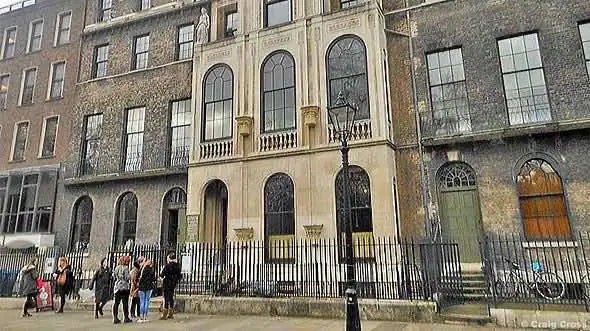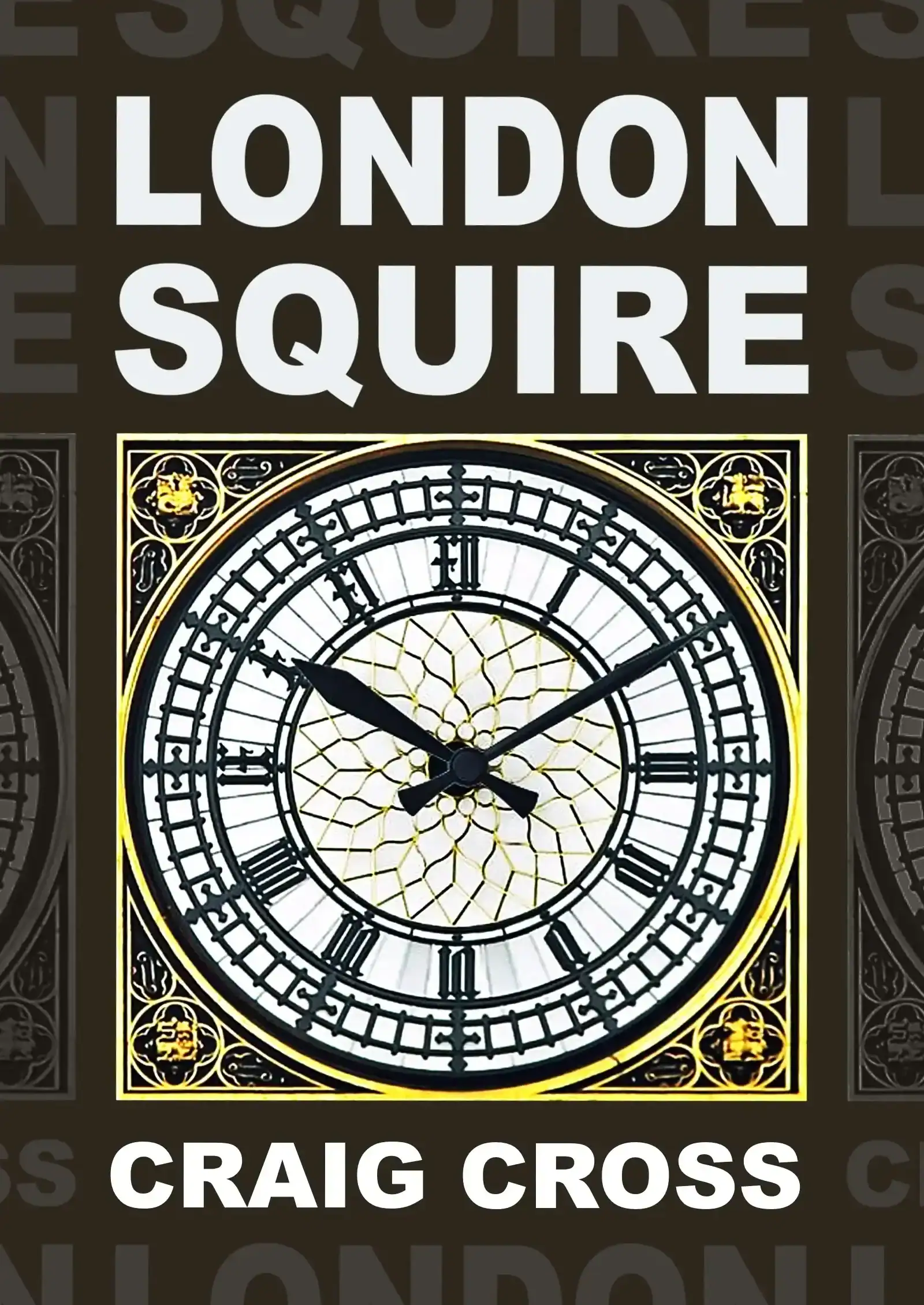
Imagine if you tried to cram the entire contents of the British Museum into a three-story townhouse. That’s exactly what this place is like.
Whenever I visit it I’m always reminded of those old cop shows where they shoulder-barge open a dead man’s front door and find a skyscraper stack of newspapers piled up behind it. Ten years’ worth of papers and magazines all tied up in string, and a mountain of carrier bags stuffed inside more bags, all packed with the tat that the victim couldn’t bear to throw away. And buried somewhere inside all of that rubbish will be his festering dead body… well that’s what this place is like, even down to the dead body (there’s a sarcophagus in the basement).
Sir John Soane was either a collector or a kleptomaniac and he seems to have scoured the planet for every broken statue and busted brick he could find and then shoehorned them into his Georgian townhouse whether they fitted or not – if there was an inch of wall space still showing then he’d nail up another shelf and cement a statue to it. Trust me when I say you don’t want to do the dusting in this house because he’s got millions of vases, statues, heads, legs, cups, jugs, plates, slates, books and boxes, all stacked up from the floor to ceiling.
And the great thing about this museum is that it’s completely free. You just queue up by the iron railings and patiently wait your turn. This can sometimes take a while because the corridors are very tight inside and they don’t allow very many people in at once. They also confiscate all your rucksacks and bags so you don’t accidentally swing them round and knock a thousand pounds-worth of statues off the banisters (which would be very easy to do!).
His dining room and library are tick-tock silent (the kind of room where you can hear the grandfather clock tick-tocking in the corner). They’re nice enough to look at but you didn’t come here to see these, and you’ll quickly forget them once you’ve seen the rest. Then you walk into his lemon-yellow drawing room and see a few of his architectural paintings on the wall. Soane was the architect who built the original Bank of England and some of his ideas turned out to be bigger than his budget – check out his plans for a Senate House. I love the Houses of the Parliament but jeez… if they’d let him build that then we’d have been the envy of the world!
Paintings by Canaletto and Hogarth
His picture room is where he kept some of his prized-possessions: three pieces by Canaletto and a series by William Hogarth. Unfortunately he picked the worst room in the house to hang them because there’s not enough space to show them. His solution was to hinge some flat panels over the top so he could swing them out like an extra wall, but every time you swing one out it covers up the one underneath. It sounds totally daft, and it is daft, because these aren’t ordinary paintings he’s displaying here – two of them are from Rake’s Progress!
As you walk further into the house it begins to narrow down until there’s barely enough room to move. The colonnade around the top is so small and skinny that you have to pin your arms to your side so the other people can squeeze past. But that’s all part of its charm – you won’t have seen anywhere else like this place. Every wall has got a block of concrete on it (or ten blocks of concrete) to display ten tiles, ten statue heads, ten chiselled inscriptions, lots of pots, vases, urns, headstones, Greek gods, Roman emperors, Egyptian deities, gargoyles, battle scenes and temples either standing on, or hanging from, every inch of space in the place. They’re two inches from your nose, one inch from your toes, and a split-second from being knocked over the edge onto the tourists down below.
There’s not a lot of light around and I get the impression that he didn’t like the sunshine much because what little light he allowed to penetrate his rooms was either funnelled through a skylight or coloured up through a tinted window. He put all of his windows to work: aiming their rays like a spotlight, or turning them into a picture frame to view another room.
Sarcophagus of Egyptian Pharaoh Seti I
The gloomiest room of all is the crypt containing the sarcophagus of Seti I. Giovanni Belzoni dug it up in the Valley of the Kings and then sold it to Soane for a couple of grand, and he somehow managed to manoeuvre it into his crypt (don’t ask me how). You have no choice but to stand two inches from it because that’s how much space he left around the walls.
There were six tourists crowding around it when I was down there today, and we were all taking it in turns to move a few inches so we could shift our positions slightly. It was like we were playing one of those sliding puzzle games… how many moves will it take before we reach the exit?
Sir John Soane’s Museum is very easy to sum up: it’s definitely worth a visit. There’s nowhere else like it in London.
If you enjoy this then try British Museum (you can walk it in 7 mins); Petrie Museum (walk it in 18 mins or take a tube journey from Holborn to Goodge Street) and Wallace Collection (travel from Holborn to Bond Street by tube). If you like impressive old houses then try the Leighton House Museum and 18 Stafford Terrace
 The author Craig Cross owns city-guide.london and has spent the last decade reviewing the capital’s landmarks, attractions and hotels. His guidebook London Squire is available from Amazon
The author Craig Cross owns city-guide.london and has spent the last decade reviewing the capital’s landmarks, attractions and hotels. His guidebook London Squire is available from Amazon
Your comments and questions
Ms Bundock This is a delightful house full of beautiful treasures. You cannot sense what it is like inside until you have seen it with your own eyes. I wonder what it must have been like to live here. What an interesting man he must have been
Leave a comment